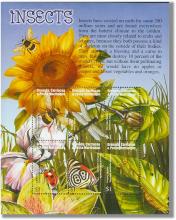De glastuinbouw is voor 90% aangesloten op het riool, maar blijft het oppervlaktewater vervuilen met pesticiden
De zorg voor de waterkwaliteit is één van de kerntaken van het Hoogheemraadschap Delfland. Delfland meet en bewaakt de waterkwaliteit om inzicht te krijgen in de ontwikkeling van de waterkwaliteit en het effect van maatregelen op de waterkwaliteit. Elk jaar rapporteert Delfland over de resultaten van de monitoring van het jaar ervoor, waarbij naast onder meer het volgen van de stikstof- en fosfaatconcentraties ook een breed pakket van 300 bestrijdingsmiddelen wordt geanalyseerd op voorkomen en concentratie. De waterkwaliteit in het gebied van Delfland is nog verre van goed. Hoewel sinds 2013 ruim 90% van alle glastuinbouwbedrijven is aangesloten op het riool, zijn de concentraties bestrijdingsmiddelen niet of nauwelijks gedaald. In 2014 overschrijden 19 verschillende bestrijdingsmiddelen op minimaal 1 locatie de norm. In totaal zijn er 13 tot 14 bestrijdingsmiddelen die al minstens 4 jaar boven de norm worden aangetroffen. De concentraties van de drie neonicotinoïden imidacloprid, thiacloprid en thiamethoxam is boven de norm (met maximaal aangetroffen concentraties van respectievelijk 3.200, 400 en 2.200 nanogram per liter). De polders met de meeste bestrijdingsmiddelen (gemiddeld 14 stoffen per meting) zijn de glastuinbouwgebieden in de Zuidpolder van Delfgauw, de Oranjepolder en de Hoefpolder.










